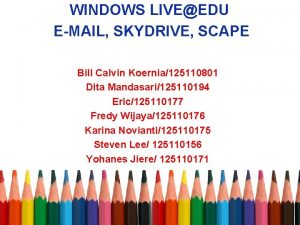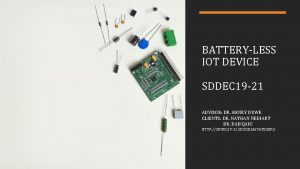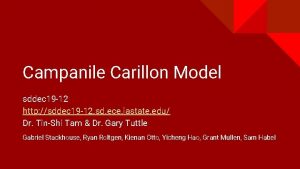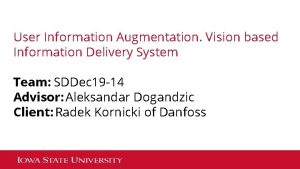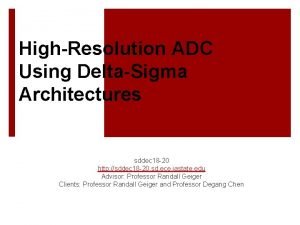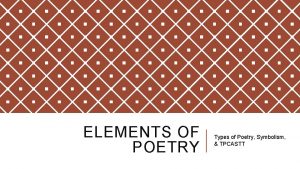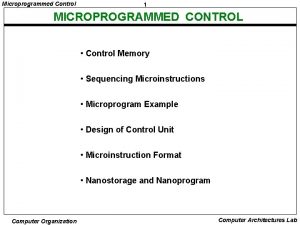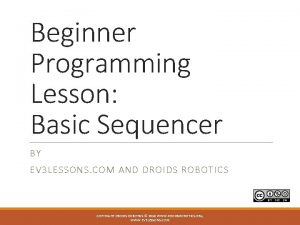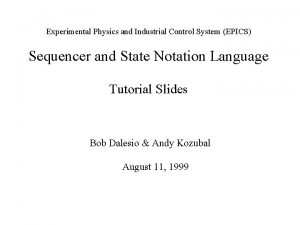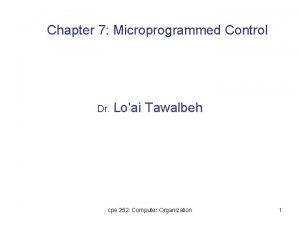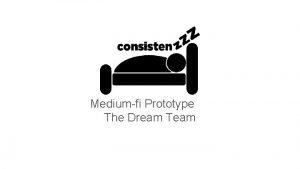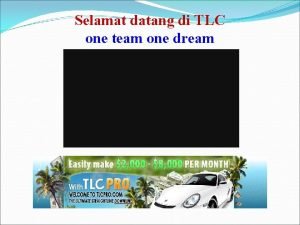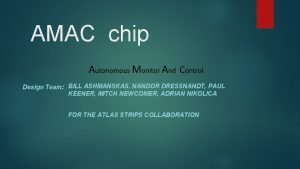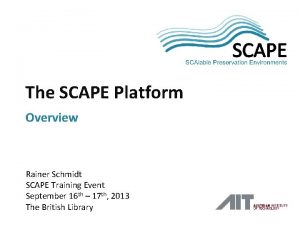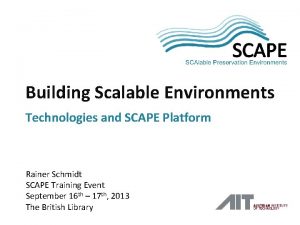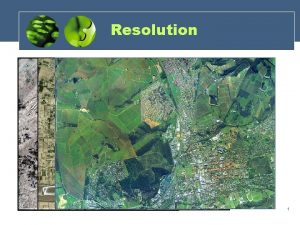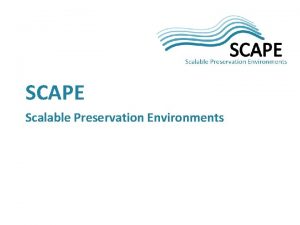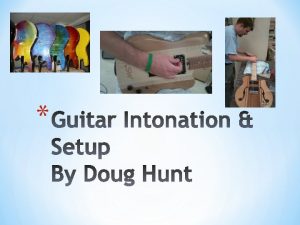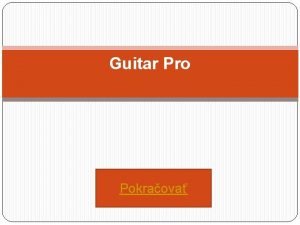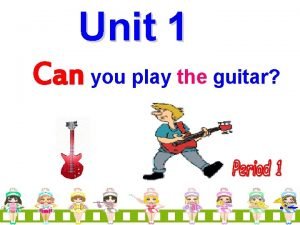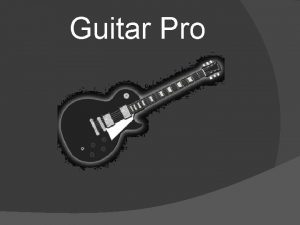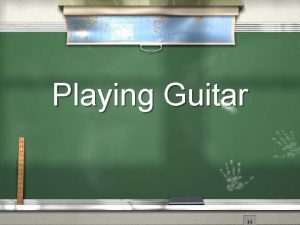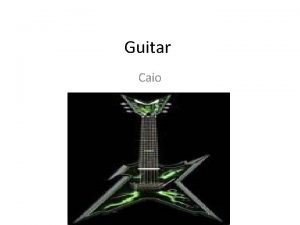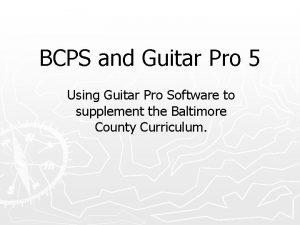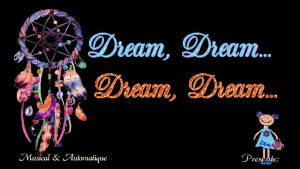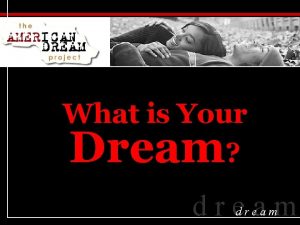Dream Scape A MultiEffect Guitar Sequencer Team sddec

















- Slides: 17

Dream. Scape: A Multi-Effect Guitar Sequencer Team: sddec 18 -21 Calyn Gimse, Derrick Lawrence, Tyler Mc. Anally, Charles Rigsby, Karla Beas

Problem Statement ● Effect Pedals play an important role in live performances. ○ ○ Multiple effects require stringing multiple pedals with each other and become complex and messy Effects in parallel not easily possible with standard effect pedals ● Configuration of configurable boards on market unintuitive ○ ○ Many still only accept one effect at a time or only effects in series Configuration of presets only allow one on the board at a time ● Our plan is to design a pedal-board that allows free configuration of effects ○ ○ Intuitive UI Multiple presets loaded to free-switch in the middle of a set Efficient signal processing Modular preset design to allow for additional effects to be added in the future

Our Solution ● Raspberry Pi microcontroller used to process signals ○ ADC/DAC circuit used to send signals to/from the Pi ● Android Application used to configure presets with the board ● Display on board used to show current selected preset ● Board takes input from a guitar, output to an amplifier ○ Input stage can accept a signal from any source with an amplitude between 50 m. Vpp and 4. 5 Vpp

Project Design-Software ● ● ● ● Signal Processing code written in C Bluetooth Socket methods written in Python Reads preset files to set proper effect configuration Takes in an input signal from ADC input Outputs the processed signal to DAC output Individual effects are separate methods that modify the signal Some effects were referenced from Pedal. Pi, an Open Source lo-fi singleeffect pedalboard. ○ ○ Most effects were edited for our purposes Some effects (such as loopers) are 100% original. ● Early testing of effects used with wavefiles outputted through auxillary output using Port. Audio Open Source Library. ● X 11 Libarary used to display simplistic UI on the board.

Project Design-Software Preset Format: ● ● ● Verification string (447448) Preset name prefixed with NAME START starts input, END signals end of preset STEP signals moving to the next layer Effect: ○ ○ ○ Name Effect-specific Vals (optional) Options bit (optional, usage varies) Effect Weight (not on NOSOUND) Which layer to get sound from (0=default)

Project Design-Software List of Effects: ● ● ● ● Clean: Output unaltered sound Bitcrush: Shift sound left by n bits Booster: Boost audio by a fractional value Delay: Adds a delay to outputted sound Distortion: Cap highest and lowest possible sound Echo: Plays a delayed sound that tapers off Fuzz: Sets signal above/below a threshold to max/0 Tremolo: Compares amplitude with a waveform to change audio volume in a sine wave ● No. Sound: Output nothing. ● Octaver: Shifts pitch of audio by changing the speed at which the sound outputs, can also be a looper ● Loopers: See Next Slide

Project Design-Software Looper Effects ● ● Accidental novel discovery Records an audio signal, and repeats the signal on an infinite loop Options to wipe audio or record over recorded audio Recorded audio can be outputted many ways: ○ ○ Standard (Looper) Reverse (Invert. Looper) Forward/Backward (or vice-versa) At a different pitch/speed (Octaver) ● Looper buffer can be statically set, or dynamically set when recorded (to a certain limit)

Project Design-Application ● Application developed in Android ● Communicates with Software via Bluetooth socket ● Sends/receives commands and preset files ○ ○ Can send commands to change presets in software Deprecated by footpedals but still implemented ● Configures and saves presets internally

Project Design-Application Preset Configuration Activity: ● ● ● Shows a list of presets stored on the device Can download presets from the board and add to the list Can upload presets onto the board Can create new(blank) presets Can edit presets

Project Design-Application Preset edit activity: ● Shows a simplistic diagram of the effect mux ● More/Less effects can be added in parallel ○ Preset file stores unused spots as NOSOUND effects ● Tapping a preset opens a configuration box ○ Fields are unique to each effect

Project Design-Hardware IC overview: ● ● ADC used to convert guitar signal to binary data for DSP stage DAC advantageous over PWM for D-to-A reconstruction Dual package Op-Amp used for input and output stage Chips used were specced with a Vdd supplied by Pi 3 +5 V rail

Project Design-Hardware Input Stage: ● 4 th order band-pass filter to remove noise and high order harmonics ● Bias network to prevent negative voltage input to ADC ● Op-Amp provides low impedance source per ADC datasheet ● Active pickups require removal of top panel

Project Design-Hardware Output stage: ● 2 nd order band-pass filter ● Unity buffer to provide low output impedance ● DC blocking capacitor to remove the bias of the DAC output.

Project Design-Hardware Switching and Display: ● Rugged, momentary contact push-button switches used for switching ● +3. 3 V Pi 3 rail, along with 10 k series resistor keep current draw low ● +5 V, 4 A power supply with Micro-usb splitter to power Pi and HDMI display ○ Pi 3 suggested current rating of 2. 5 A max and display requires 600 m. A ● Display panel large enough to see across stage by performer

Project Design-Enclosure ● Solidworks used to model the enclosure and DXF export for CNC milling ● Made of wood with plexi-glass display cover ○ Cheap, durable, and easily workable - weather resistant with attentive care ● Hardware mounted to underside of top panel for easy removal

Project Cost Analysis ● ● ● ● ● Tablet - $60 Raspberry Pi 3 - $35 Terminal Block Pi Shield - $20 HDMI Display - $80 Foot Switches - $60 Power Supply - $20 Interconnects - $30 IC Chips - $10 Passive Components - $20 Prototyping + Leftover - $150 Enclosure: ● ● ● Wood - $20 Screws - $10 Brackets & Standoffs - $10 Plexiglass - $5 Paint - $15 Other - $10 Total Project Cost = $555

Demo Questions?
 Apa itu scape
Apa itu scape Scape procure
Scape procure Batteryless iot
Batteryless iot Sddec
Sddec Tensorflow eye tracking
Tensorflow eye tracking Sddec
Sddec Sddec
Sddec Elements of poetry symbol
Elements of poetry symbol To dream the impossible dream poem
To dream the impossible dream poem Symbolic microprogram
Symbolic microprogram Microprogram sequencer diagram
Microprogram sequencer diagram Epics sequencer
Epics sequencer Epics sequencer
Epics sequencer What is address sequencing in computer organization
What is address sequencing in computer organization Dream team
Dream team Dream team christmas
Dream team christmas One team one dream artinya
One team one dream artinya Nandor dream team
Nandor dream team
